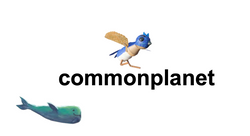Coccolithophores are unicellular, flagella phytoplankton predominantly found at the surface of the world's oceans. They are known for the tiny shield like calcium carbonate plates known as coccoliths that form a protective barrier around the organism. Coccolithophores also produce a compound called dimethylsulfoniopropionate (DMSP) which is believed to be involved in osmoprotection. DMSP has also been proposed to have other roles such as being an osmolyte, an antioxidant, and a mechanism for managing excessive cellular energy according to Kirst et al. (1990), Sunda et al. (2002), and Stefels (2000) and Allen (2005) respectively. Additionally, according to Karsten et al. (1996), DMSP is hypothesized to be produced by polar diatoms and algae as a cryoprotectant. However, DMSP has climate altering properties to it outside of the organism. When coccolithophores die or are put under high stress, DMSP is released to then be broken down by various marine bacteria into dimethyl sulfide (DMS) that is then released into the atmosphere. There, DMS undergoes a series of chemical reactions to form sulfate particles that act as cloud condensation nuclei that provides surfaces onto which water vapor can condense, leading to the formation of clouds. Because of this, DMS has been called an anti-greenhouse gas as the formation of clouds above the ocean cool down ocean surface temperatures and block solar radiation.
Daniel Kim (August, 2023)

